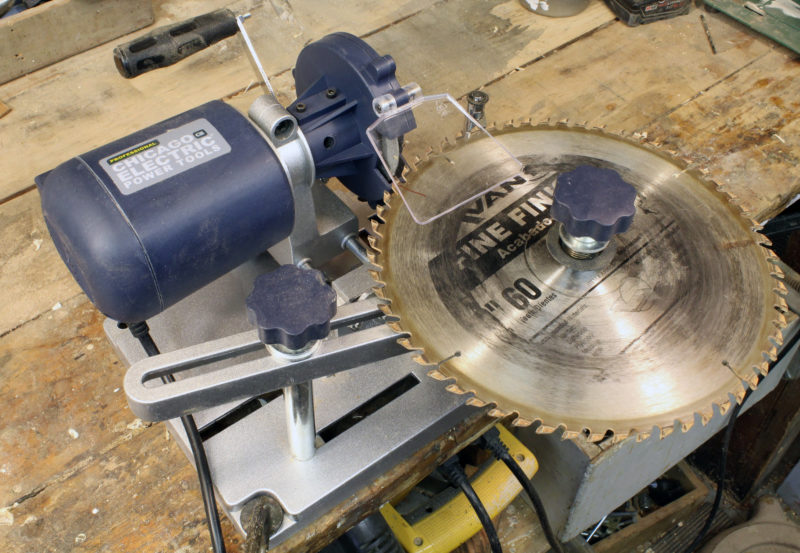 Photographs by the author
Photographs by the authorAfter it was set up for this 10″ blade, the sharpener got through all 60 carbide teeth in less than 3 minutes. I was impressed until I took a very close look at the results.
Not long after I bought Harbor Freight’s 1 x 30 belt sander, I returned to the store for their circular saw blade sharpener. The belt sander needed a little bit of work to make it run smoothly, but it has become one of my most frequently used tool, so I had high hopes for the sharpener—a little bit of fussing to get it tuned up and then it might do a respectable job.
The reviews on the Harbor Freight web site for the sander and the sharpener were about the same, 4-1/4 stars for the former and 4 for the latter. Several noted that setting up a blade for sharpening was time consuming, so I wasn’t surprised that it took a half hour to set the spring-loaded pawl in the right position on the blade. I eventually was satisfied that the 4″ diamond-abrasive wheel would just kiss each carbide-tooth face and shave it down to a new clean surface with a sharp cutting edge. Making fine adjustments to the pawl’s support was quite difficult because when the bolt holding it to the base was loosened, the post tended to move much more than I wanted it to. A screw adjustment device would have made a world of difference. The kit included a 10 mm wrench for turning the bolt head, and it worked for a while, but soon started slipping. The bolt’s hex corners were a bit rounded from the get-go and even before I had made adjustments for the first saw blade, the wrench no longer worked. Fortunately, a 3/8″ box-end wrench was a tight, functional fit. I was okay with that and decided I’d replace the bolt with a thumb screw that wouldn’t require a wrench.
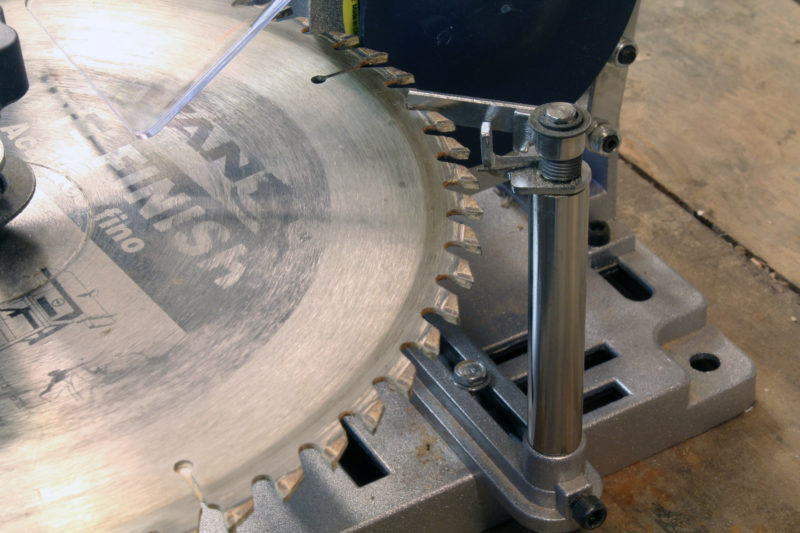
The spring-loaded pawl at the top of this post sets the teeth at the right position for the diamond-coated blade, just visible at top center with the yellow label. Setting the pawl is done by loosening the hex bolt in the slot of the posts’s base. It’s difficult to adjust, but not the fatal flaw.
The motor and wheel ride on an adjustable carriage that tilts 25 degrees either direction from square. The indicator was set at 0 degrees, but the wheel was hitting just one side of the first tooth. A few small adjustments got the wheel to make full contact. A screw adjustment device would be an improvement here too, but all of the carbide-tipped blades have teeth square to the blade, so this initial adjustment might be the only one I’d need to make.
With the adjustments made for a 60-tooth blade, I sharpened all of the teeth in under 3 minutes. The pawl did not set the teeth precisely. There was some play in the sharpener and I could apply a bit of pressure on the blade to get a consistent sound as the diamond abrasive worked on the carbide.
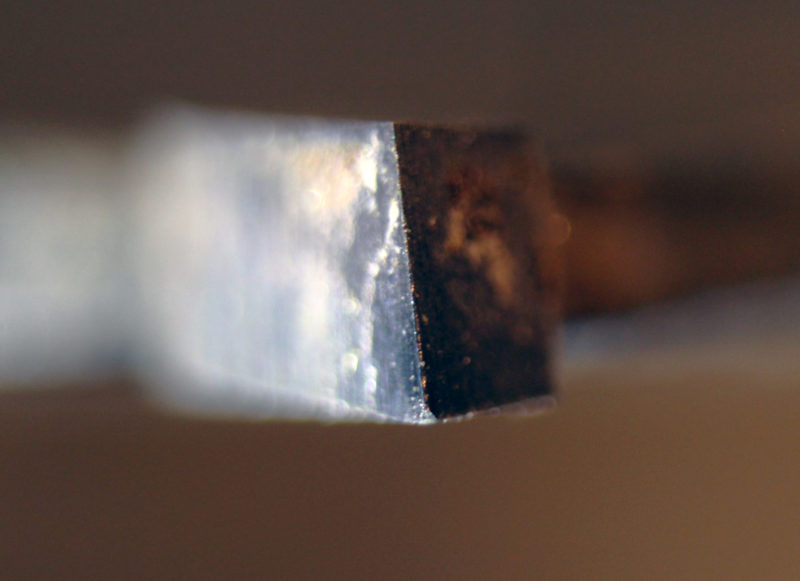
This carbide tooth wound up with a ragged cutting edge and a chipped corner. Before the “sharpening,” the edge was smooth and straight, and only just a bit softened.
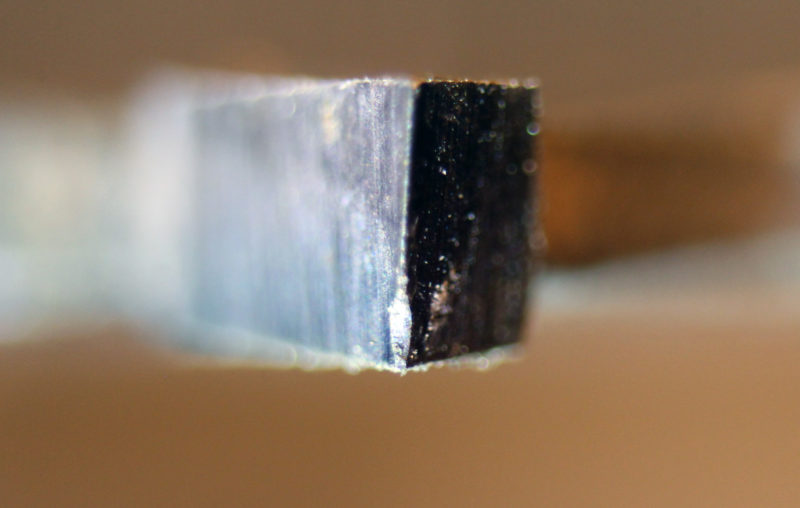
And this tooth took a real beating in the sharpener and lost a quarter of its edge to the diamond wheel.
When I was finished, all of the tooth faces had a new shiny surface, which I took as an indication that the cutting edges would be sharp. It wasn’t until I took a powerful magnifier to the teeth that I saw what the sharpener had done. The diamonds left tracks across the carbide; under magnification it looked like the work of a garden rake. That was bad enough, but the worst damage was at the edges and corners of the teeth. Carbide had been chipped away on very tooth. I didn’t bother putting the blade back on the table saw. It was ruined.
I went to the Harbor Freight web site and closely read all 37 of the one-star reviews, the ones I’d dismissed as being in the minority. Among them were two that matched my results:
Everything posted about how hard this is to setup it true. However, with a little patience, this tool can be used to sharpen circular saw blades. However, the real problem is with the available grinding wheels. The diamond wheel is just too coarse.
When finished, I looked at the top cutting edge of each tooth. Every one had carbide grains chipped out instead of a sharp edge.
If Harbor Freight would offer wheels with finer grit, there’d be hope for the sharpener, but the 180-grit wheels that are supplied with the machine and available as replacements are brutal on carbide saw teeth. I have two diamond sharpeners from EZE-Lap Diamond Products with four grades of diamonds on aluminum handles about the size of tongue depressors. The grits are rated from 250 to 1200, and the 250 grit is designated as “coarse.” That puts the 180-grit wheel on Harbor Freight’s circular saw sharpener into the proper perspective—coarser than coarse.
Harbor Freight has a 90-day return policy. Unfortunately, that opportunity for a return went by 4 months ago. I’m reminded of a billboard I used to drive by back in the 1960s: “Only the rich can afford poor quality.”![]()
Christoper Cunningham is editor of Small Boats Magazine.
Afterword
When the Harbor Freight sharpener failed to live up to its promise, I kept looking for ways and devices to sharpen carbide-toothed saw blades. In the comments following one DIY sharpening video, someone mentioned that carbide dust created by sharpening is a health hazard. I did a bit of research and found the Washington State Department of Labor & Industries confirmed the risk in a 1995 article titled “Carbide tips create heath problems”:
Workers who file saw blades or those who machine tools with tungsten carbide (or other “hard metal”) tips may be exposed to toxic levels of cadmium, a cancer-causing agent, and cobalt, a suspected cancer-causing agent.
A lot of the jobs I do in my shop create dust, some more evident than others, so a dust mask is always warranted, but, for me, the health risks of creating carbide dust outweigh the benefits of sharpening my circular saw blades myself.
Is there a product that might be useful for boatbuilding, cruising, or shore-side camping that you’d like us to review? Please email your suggestions.




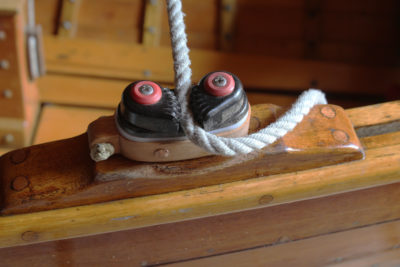
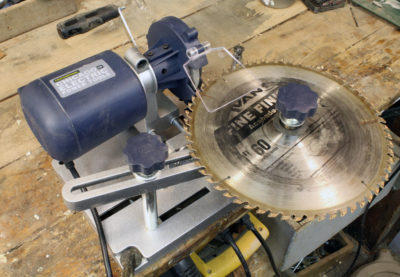
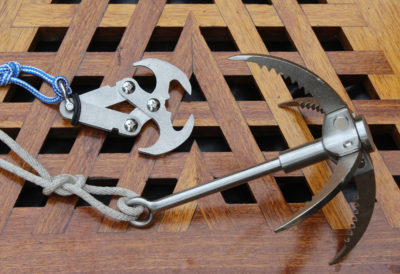

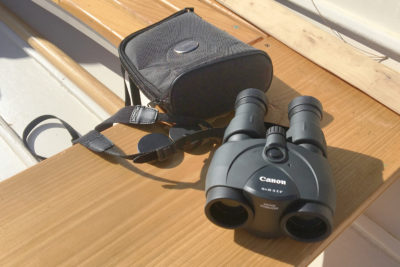

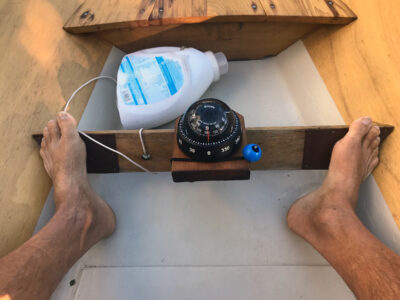
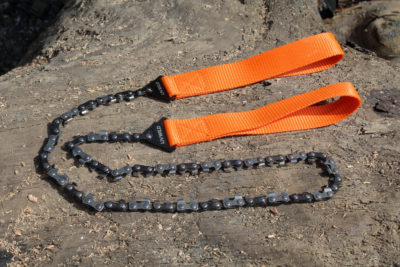
Good to know. I’ve found some of their tools to be quite functional but some of them aren’t so great.
Thank you for the honest review. I won’t be purchasing one of these.
if you have a table-top tile saw you can sharpen a square-edge carborundum blade. Place the blade on a flat 1/2″ shim so it does not hang up on the saw deck. With the saw running, line up the edge of the diamond blade with the edge of the saw tooth and grind the tooth.
Nothing I’ve ever bought at Harbor Freight has been worth the effort. I know several places that’ll sharpen carbide circular saw blades properly. A 10” 80-tooth ATB might run $30. So I can have one sharpened three times before it’s better to chuck it and buy a new one.
I just bought the same Harbor Freight saw blade sharpener and am having the exact same issues – maybe even more. If you really, really play with the thing, it does a reasonably decent job of sharpening. But it’s not repetitive in any way. I too wish they offered a fine grit wheel.
There is a video on youtube showing modifications to this machine … I have done those and it has taken the play out of the machine. I have also gone to a fine diamond blade which makes a world of difference. Happy with this machine still would like to modify adjusting it and that will happen